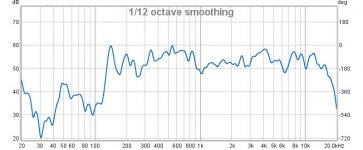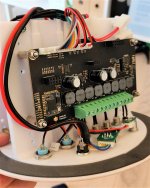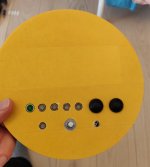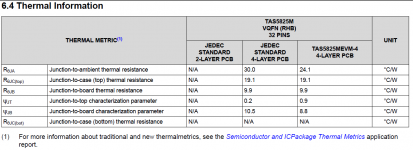@TNT
I thought it would be clear at this point, but maybe its simpler in my head than in reality.
So you always have three options: left, right or mono.
Currently you can only set A and B together and C and D together.
So for example:
1) A+B = mono and C+D is mono
2) A+B = left and C+D is right
Which means that if you have your satellites on channel A and B, you can only give them both the same input (left OR right OR mono). No individual settings, so A=left, B= right is not possible.
But in a couple of weeks, with an upcoming version of the configuration tool, it will be possible to set all input mixer channels invididually at the cost of not being able to use crossover/delays (equalizer is still available) due to limited DSP power.
I think it will be pretty clear once you download the new tool and switch between the two modes.
@gary
Its probably a simple fix, I will take a look at it to fix it in the upcoming release
I thought it would be clear at this point, but maybe its simpler in my head than in reality.
So you always have three options: left, right or mono.
Currently you can only set A and B together and C and D together.
So for example:
1) A+B = mono and C+D is mono
2) A+B = left and C+D is right
Which means that if you have your satellites on channel A and B, you can only give them both the same input (left OR right OR mono). No individual settings, so A=left, B= right is not possible.
But in a couple of weeks, with an upcoming version of the configuration tool, it will be possible to set all input mixer channels invididually at the cost of not being able to use crossover/delays (equalizer is still available) due to limited DSP power.
I think it will be pretty clear once you download the new tool and switch between the two modes.
@gary
Its probably a simple fix, I will take a look at it to fix it in the upcoming release
Build still in progress but already really happy about your amp!
Components:
- 2 x Dayton DSA 90 fullrange in a 4l cabinet - reflex tuned ~65hz
- Zoudio 4 channels in use - each drive separately
General EQ at 5-8kHz with 5 db boost to compensate lacking original driver response
Lower drivers second level lowpass at 800hz, upper drivers full range.
Measurement done before reflex tuning, that's why lower end is lacking.
I think the price/performance ratio is excellent, it's really easy to test and adjust this kind of DIY projects instead of using old-school passive components.
A proposal - you could maybe invest in a ready made box as accessory. Not that there's anything wrong with the cardboard box 😀
Components:
- 2 x Dayton DSA 90 fullrange in a 4l cabinet - reflex tuned ~65hz
- Zoudio 4 channels in use - each drive separately
General EQ at 5-8kHz with 5 db boost to compensate lacking original driver response
Lower drivers second level lowpass at 800hz, upper drivers full range.
Measurement done before reflex tuning, that's why lower end is lacking.
I think the price/performance ratio is excellent, it's really easy to test and adjust this kind of DIY projects instead of using old-school passive components.
A proposal - you could maybe invest in a ready made box as accessory. Not that there's anything wrong with the cardboard box 😀
Attachments
Ah, after looking at the diagram, it makes more sense.
Actually it is probably not too bad.
I could use it for 2 channel biamping which is what in a way it is designed for.
I then add a capacitor and a potential divider to ground to the speaker output and connect them to the subwoofer line input.
My subwoofer is powered so it is not too much issue.
Oon
Actually it is probably not too bad.
I could use it for 2 channel biamping which is what in a way it is designed for.
I then add a capacitor and a potential divider to ground to the speaker output and connect them to the subwoofer line input.
My subwoofer is powered so it is not too much issue.
Oon
Hi luketveld,@TNT
I thought it would be clear at this point, but maybe its simpler in my head than in reality.
So you always have three options: left, right or mono.
Currently you can only set A and B together and C and D together.
So for example:
1) A+B = mono and C+D is mono
2) A+B = left and C+D is right
Which means that if you have your satellites on channel A and B, you can only give them both the same input (left OR right OR mono). No individual settings, so A=left, B= right is not possible.
But in a couple of weeks, with an upcoming version of the configuration tool, it will be possible to set all input mixer channels invididually at the cost of not being able to use crossover/delays (equalizer is still available) due to limited DSP power.
I think it will be pretty clear once you download the new tool and switch between the two modes.
@gary
Its probably a simple fix, I will take a look at it to fix it in the upcoming release
Just want to highlight something, your proposed solution won't work well in satellite sub system. Typically a satellite requires a high pass filter which unfortunately your proposed solution will remove...
Oon
Haha great solution Lars!
Oon, the equalizer is still available, so you can apply a highpass to both speakers. Its just the crossover/delay that is disabled in that mode.
Oon, the equalizer is still available, so you can apply a highpass to both speakers. Its just the crossover/delay that is disabled in that mode.
I then add a capacitor and a potential divider to ground to the speaker output and connect them to the subwoofer line input.
My subwoofer is powered so it is not too much issue.
Oon
I was surprised to find on two different subs I own (Velodyne and Dayton) they actually anticipated bridged amplifiers driving the speaker inputs. In other words, the black (-) input isnt connected to the ground of the RCA line input, nor is it connected to the other channel (-). You can connect the speaker lines directly to the sub. I have my HifiBerry amp with BTL output connected this way to the Velodyne.
Of course, "check before connect"!
Last edited:
Oh, the equalizer allows highpass filters, that's good.Haha great solution Lars!
Oon, the equalizer is still available, so you can apply a highpass to both speakers. Its just the crossover/delay that is disabled in that mode.
Oon
I would like to implement a kind of equal loudness contour. I think a bass and treble shelf would do it?
Is there any examples of how to implement the volume depending filters?
Is there any examples of how to implement the volume depending filters?
What codecs are accepted by the BT adapter?
Streaming from iPhone or iPad it should be AAC, but what else is available, and can I force a setup ?
Streaming from iPhone or iPad it should be AAC, but what else is available, and can I force a setup ?
So feedback I actually had some brewing but this has propmpted it...
Plus
Remember file path when saving/loading .ini files
When reseting on app clear out all leagcy info. IE: at the moment it will show the old info on the filter drop down.
For EQ remember last filter choosen when selecting the next filter
Datasheet/Manual/FAQ add more detail to specs etc. might deflect some of the regular questions eg: filter slope (12db/oct), use examples of dynamic EQ, in datasheet label pinouts, how to connect programmer
Any chance for EQ import feature from REW, would save a lot of manual work?
Plus
Remember file path when saving/loading .ini files
When reseting on app clear out all leagcy info. IE: at the moment it will show the old info on the filter drop down.
For EQ remember last filter choosen when selecting the next filter
Datasheet/Manual/FAQ add more detail to specs etc. might deflect some of the regular questions eg: filter slope (12db/oct), use examples of dynamic EQ, in datasheet label pinouts, how to connect programmer
I have a quick question regarding cooling of the chip to get max power at 2 ohms.
Would it be most efficient to place a heatsink directly on the chip or to thermally glue it to the backside? I also plan on adding a small fan.
Is it possible to not have the AUX input connected, since I don't plan on using it? Lastly, the software isn't clearly showing how to PBTL 2 channels. I guess it's A+ and B+ to have a PBTL channel?
Here are some pics of my 3D printed "enclosure" for the amp and Wondoms 5x 18650 battery board. If anyone wants it, I can upload the file. It's covered in double sided tape, because I'm getting a acylic topplate lasercut to be able to have text engraved.

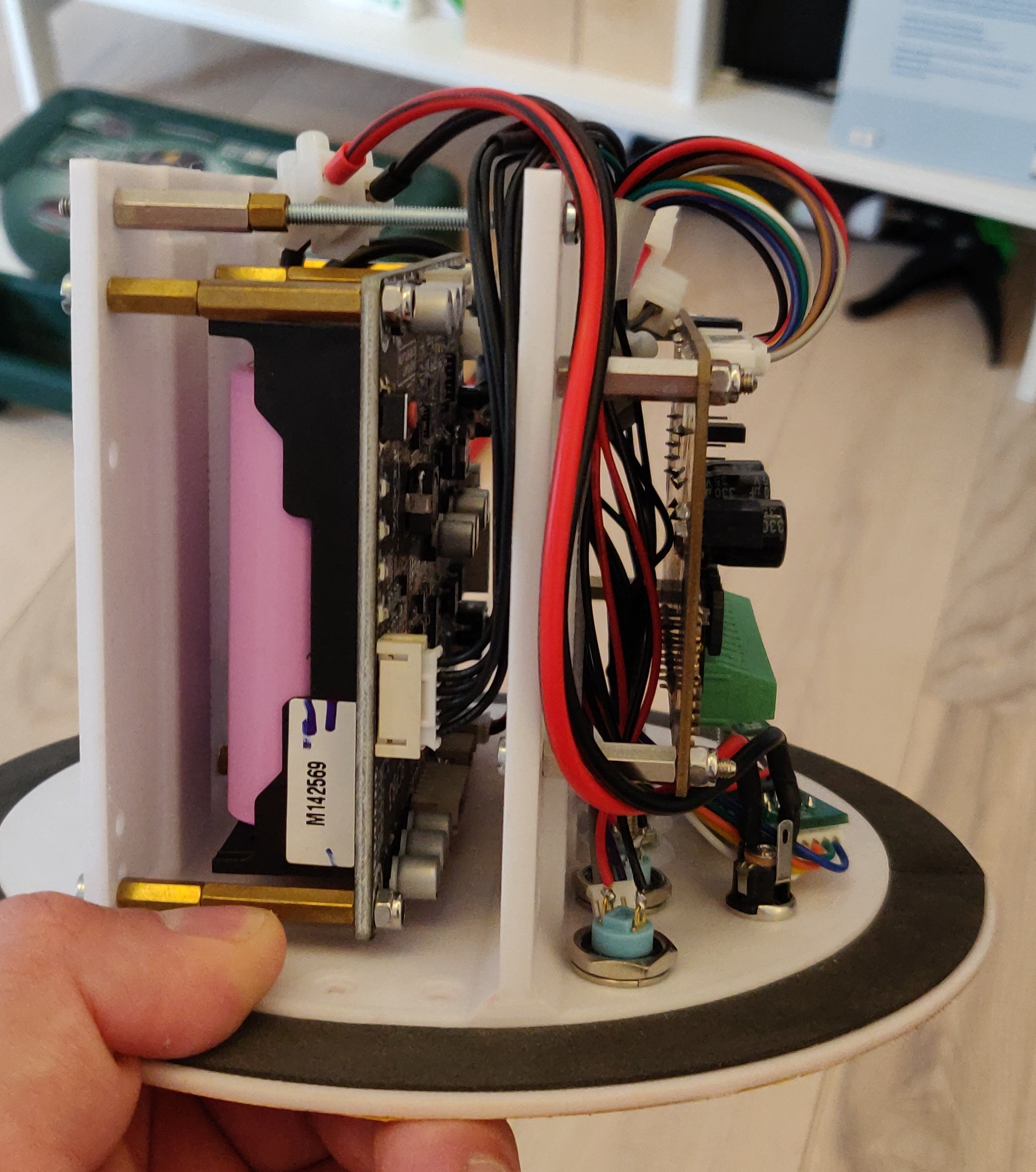
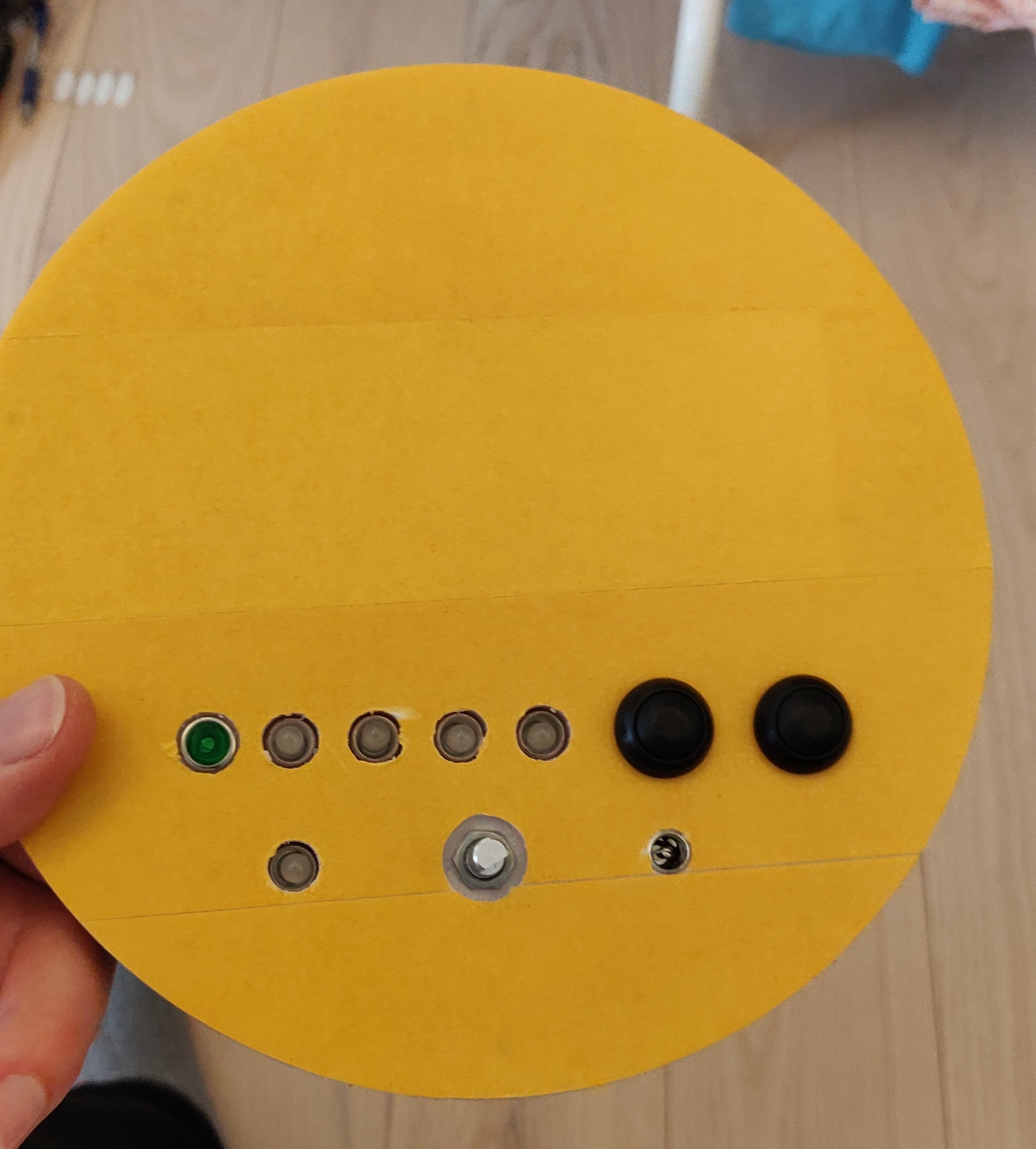
Would it be most efficient to place a heatsink directly on the chip or to thermally glue it to the backside? I also plan on adding a small fan.
Is it possible to not have the AUX input connected, since I don't plan on using it? Lastly, the software isn't clearly showing how to PBTL 2 channels. I guess it's A+ and B+ to have a PBTL channel?
Here are some pics of my 3D printed "enclosure" for the amp and Wondoms 5x 18650 battery board. If anyone wants it, I can upload the file. It's covered in double sided tape, because I'm getting a acylic topplate lasercut to be able to have text engraved.
Attachments
Last edited:
The answer can be found from the chip datasheet.
The thermal resistance to case top is twice as high as thermal resistance to PCB. Thus it is more efficient to thermally attach a heat sink to the bottom side of the board. Still, it does not hurt to add a small sink to the top if it is possible to do.
The thermal resistance to case top is twice as high as thermal resistance to PCB. Thus it is more efficient to thermally attach a heat sink to the bottom side of the board. Still, it does not hurt to add a small sink to the top if it is possible to do.
Attachments
Last edited by a moderator:
@metguy
Bass and treble shelf indeed.
As mentioned before, the low level EQ gets slowly replaced by the high level EQ between -30dB and -10dB.
The amp supports A2DP / APT-X / AAC and the device usually chooses the highest quality codec it supports. I believe, at least for android, that there are apps to see which codec is currently active,
@Lars
I am not too familiar with REW. Please send an example of a file you would like to import to info@zoudio.com and I will have a look if I can implement REW importing in a future update of the configtool.
@gary
1) I will have a look
2) I just tested with V1.1.4 and when resetting it already clears the selection on the dropdown it seems? Or maybe im not understanding you correctly.
3) What would that be useful for? For higher order filters? Without any extra buttons it would be a bit confusing, because users might think there is already a filter selected.
Im working on a small manual for the configtool for the basic features and some FAQs.
@zaxder, solid mounting! Looks nice.
Aux can be left unconnected. It will switch to aux when the BT is disconnected or pause, but that is no problem.
If you select 'single' (PBTL) in the configtool it will show you the wiring. You need to connect A+/A- together, which will be your new positive, and then connect B+/B- together, which will be your new negative
I have some small heatsinks with double sided adhesive that are suited for use with the AIO4CH. If you are interested send me a mail. They attach on the backside, the chip cools itself via the copper bottom of the PCB, not the casing.
Bass and treble shelf indeed.
As mentioned before, the low level EQ gets slowly replaced by the high level EQ between -30dB and -10dB.
The amp supports A2DP / APT-X / AAC and the device usually chooses the highest quality codec it supports. I believe, at least for android, that there are apps to see which codec is currently active,
@Lars
I am not too familiar with REW. Please send an example of a file you would like to import to info@zoudio.com and I will have a look if I can implement REW importing in a future update of the configtool.
@gary
1) I will have a look
2) I just tested with V1.1.4 and when resetting it already clears the selection on the dropdown it seems? Or maybe im not understanding you correctly.
3) What would that be useful for? For higher order filters? Without any extra buttons it would be a bit confusing, because users might think there is already a filter selected.
Im working on a small manual for the configtool for the basic features and some FAQs.
@zaxder, solid mounting! Looks nice.
Aux can be left unconnected. It will switch to aux when the BT is disconnected or pause, but that is no problem.
If you select 'single' (PBTL) in the configtool it will show you the wiring. You need to connect A+/A- together, which will be your new positive, and then connect B+/B- together, which will be your new negative
I have some small heatsinks with double sided adhesive that are suited for use with the AIO4CH. If you are interested send me a mail. They attach on the backside, the chip cools itself via the copper bottom of the PCB, not the casing.
@metguy
Bass and treble shelf indeed.
As mentioned before, the low level EQ gets slowly replaced by the high level EQ between -30dB and -10dB.
So at -9dB the dynamic EQ is 0?
Please consider aptX-HD for your next version of the BT adapter.
Bass and treble shelf indeed.
As mentioned before, the low level EQ gets slowly replaced by the high level EQ between -30dB and -10dB.
So at -9dB the dynamic EQ is 0?
Please consider aptX-HD for your next version of the BT adapter.
No, its like this:
-30dB: only low level dynamic EQ is active
-20dB: low level and high level both 50% active
-10dB: only high level dynamic EQ is active
For a loudness contour you would only set the low level filters (bass and treble shelf) and just leave the high level set to allpass. This way on low level the loudness filters are active, and on high level they are replaced by the allpass (no filtering)
-30dB: only low level dynamic EQ is active
-20dB: low level and high level both 50% active
-10dB: only high level dynamic EQ is active
For a loudness contour you would only set the low level filters (bass and treble shelf) and just leave the high level set to allpass. This way on low level the loudness filters are active, and on high level they are replaced by the allpass (no filtering)
Just finished hooking up my new Zoudio amp! I built some speakers from some left over parts I had. CDT ES-400 4'' drivers and some Beston RT003C Round Ribbon Tweeters in an old Parts express bookshelf enclosure.
This amp works great. it definitely requires more than the 12v I am currently giving it. It is also completely unforgiving. The EQ and crossover adjustments are very slow to adjust and re-upload into the amp, but once there they work great. This amp really reminds me of how "unseasoned" I am at tuning !
What are you guys using for Tuning software, and basic ideas to see if drivers even work well together? The 2 drivers I have definitely do NOT !
Any ideas of some drivers that would work well together in a decent bookshelf speaker? The problem here is that I don't have a Subwoofer, so a good low end is 100% necessary ! I'm gonna have to ditch my enclosures and mids, and defintely go with a good 6.5 or 7'' driver. The problem is my tweeter only plays down to about 5k....so it looks like I need a new tweeter also lol.
This amp works great. it definitely requires more than the 12v I am currently giving it. It is also completely unforgiving. The EQ and crossover adjustments are very slow to adjust and re-upload into the amp, but once there they work great. This amp really reminds me of how "unseasoned" I am at tuning !
What are you guys using for Tuning software, and basic ideas to see if drivers even work well together? The 2 drivers I have definitely do NOT !
Any ideas of some drivers that would work well together in a decent bookshelf speaker? The problem here is that I don't have a Subwoofer, so a good low end is 100% necessary ! I'm gonna have to ditch my enclosures and mids, and defintely go with a good 6.5 or 7'' driver. The problem is my tweeter only plays down to about 5k....so it looks like I need a new tweeter also lol.
>Any ideas of some drivers that would work well together in a decent bookshelf speaker?
How about a FR speaker - woofer assisted using two amps per channel? That way you can cross really and unusually low (10X lower) for a two-way bookshelf. That's gonna sound different! And, IMHO, better...
How about a FR speaker - woofer assisted using two amps per channel? That way you can cross really and unusually low (10X lower) for a two-way bookshelf. That's gonna sound different! And, IMHO, better...
- Home
- Vendor's Bazaar
- ZOUDIO AIO4CH: 4-channel amplifier with DSP and Bluetooth
